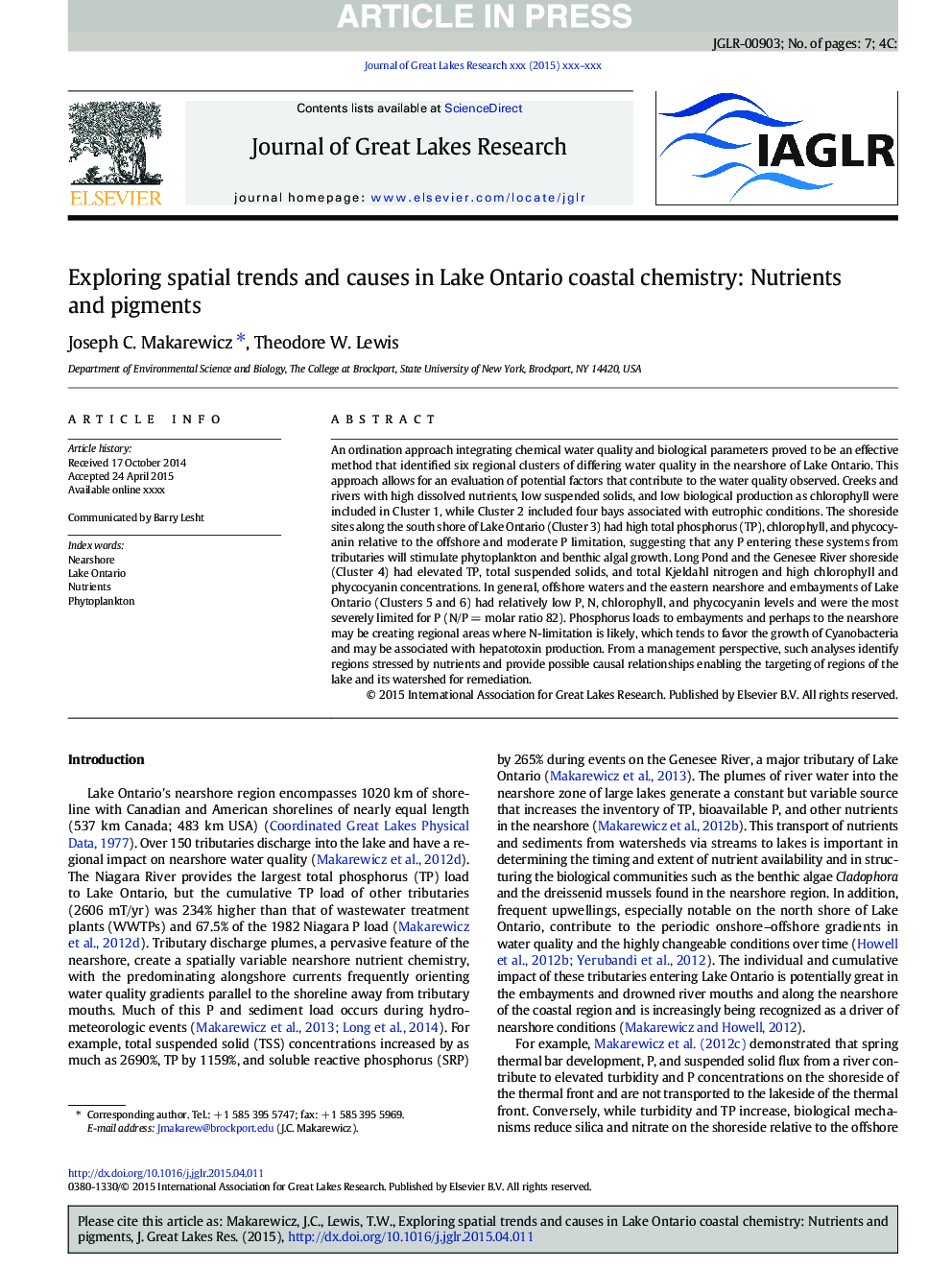| کد مقاله | کد نشریه | سال انتشار | مقاله انگلیسی | نسخه تمام متن |
|---|---|---|---|---|
| 6304953 | 1306678 | 2015 | 7 صفحه PDF | دانلود رایگان |
عنوان انگلیسی مقاله ISI
Exploring spatial trends and causes in Lake Ontario coastal chemistry: Nutrients and pigments
ترجمه فارسی عنوان
بررسی روند و عوامل فضایی در شیمی در ساحل دریاچه انتاریو: مواد مغذی و رنگدانه ها
دانلود مقاله + سفارش ترجمه
دانلود مقاله ISI انگلیسی
رایگان برای ایرانیان
کلمات کلیدی
در نزدیکی، دریاچه انتاریو، مواد مغذی فیتوپلانکتون،
موضوعات مرتبط
مهندسی و علوم پایه
علوم زمین و سیارات
علوم زمین و سیاره ای (عمومی)
چکیده انگلیسی
An ordination approach integrating chemical water quality and biological parameters proved to be an effective method that identified six regional clusters of differing water quality in the nearshore of Lake Ontario. This approach allows for an evaluation of potential factors that contribute to the water quality observed. Creeks and rivers with high dissolved nutrients, low suspended solids, and low biological production as chlorophyll were included in Cluster 1, while Cluster 2 included four bays associated with eutrophic conditions. The shoreside sites along the south shore of Lake Ontario (Cluster 3) had high total phosphorus (TP), chlorophyll, and phycocyanin relative to the offshore and moderate P limitation, suggesting that any P entering these systems from tributaries will stimulate phytoplankton and benthic algal growth. Long Pond and the Genesee River shoreside (Cluster 4) had elevated TP, total suspended solids, and total Kjeldahl nitrogen and high chlorophyll and phycocyanin concentrations. In general, offshore waters and the eastern nearshore and embayments of Lake Ontario (Clusters 5 and 6) had relatively low P, N, chlorophyll, and phycocyanin levels and were the most severely limited for P (N/PÂ =Â molar ratio 82). Phosphorus loads to embayments and perhaps to the nearshore may be creating regional areas where N-limitation is likely, which tends to favor the growth of Cyanobacteria and may be associated with hepatotoxin production. From a management perspective, such analyses identify regions stressed by nutrients and provide possible causal relationships enabling the targeting of regions of the lake and its watershed for remediation.
ناشر
Database: Elsevier - ScienceDirect (ساینس دایرکت)
Journal: Journal of Great Lakes Research - Volume 41, Issue 3, September 2015, Pages 794-800
Journal: Journal of Great Lakes Research - Volume 41, Issue 3, September 2015, Pages 794-800
نویسندگان
Joseph C. Makarewicz, Theodore W. Lewis,
